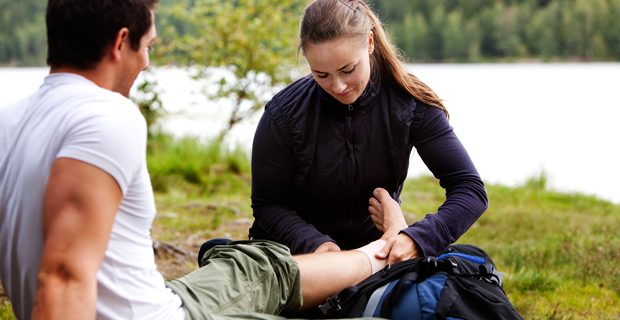
How to Improvise a Splint
Knowing how to improvise a splint can be an incredibly useful backcountry skill to know when hiking on your own or with a group. Accidents happen just as much, if not more, when you’re hiking with a group of your friends as they do when you’re walking around town so being prepared for one of those accidents to lead to a broken ankle or leg is important. With no medical assistance for miles, campers and hikers must take precautions to prepare for their time in the wild.
Obviously you put a lot of strain on your lower body while you’re backpacking so if you do need to improvise a splint you’ll probably be doing so for a twist, sprain or break in your foot, ankle or leg but these same principles can be applies any time you need to immobilize an injury like a broken arm or wrist.
Improvising splint will give you the support you need until you can get the proper medical attention.
Immobilize the Injured Area
First things first, whenever you or a member of your party end up with an injury, you need to make sure to immobilize the area. If the injury happens to be to one of your joints (ankle, knee, hip, elbow or wrist) then make sure you prepare to splint the area just above and just below the joint. If the injury is between the joints (legs, arms, etc), prepare to splint the from joint to joint. For example if your lower leg is broken, you should splint from your knee down to your ankle.
Pad the Injured Area
Before you start attaching sticks to your patient, try to make sure that the area is as padded as possible. You’re going to want to do this for a couple of reasons:
- First you want to keep the swelling under control. You should have an anti-inflammatory like ibuprofen or acetaminophen in your first aid kit but keeping the area compressed will also help keep the swelling down.
- Second, padding the area helps to make a really painful situation a little more comfortable. Remember, your next step involves lashing sticks to the injury. Whoever is the recipient of any backcountry medicine is going to be in plenty of pain as they have to walk their way back to Basecamp or the car. Trying to do anything you can to make them any more comfortable is the least that any backcountry medic can do.
Support the Injury
This part is particularly unpleasant. Once you’ve immobilized the injured area and wrapped and padded it, you need to make sure that it’s well supported. To do so, find two sturdy sticks –one for each side of your splint. Place them on either side of the injured area and find two or three pieces of lashing. Rope or twine are preferable but, if you need to, tearing a t-shirt into strips can work well.
Once you’ve prepared your patient (this is probably going to hurt a lot), wrap the lashing around the splint and tighten it enough to make sure that they won’t be moving around at all. Be careful not to cut off circulation but the tighter the splint and support are, the easier (relatively speaking) they’ll have it getting back to a place where they can receive true medical assistance.
Lastly keep an eye on the extremities (fingers and toes) to make sure that there’s no discoloration or unusual swelling – this can be a sign of blood circulation issues that need to be addressed immediately.
Nothing’s going to make the rest of the trip back to Basecamp or the car pleasant for an injured hiker but, following these instructions, at least you can do your best to avoid making a bad situation any worse.













